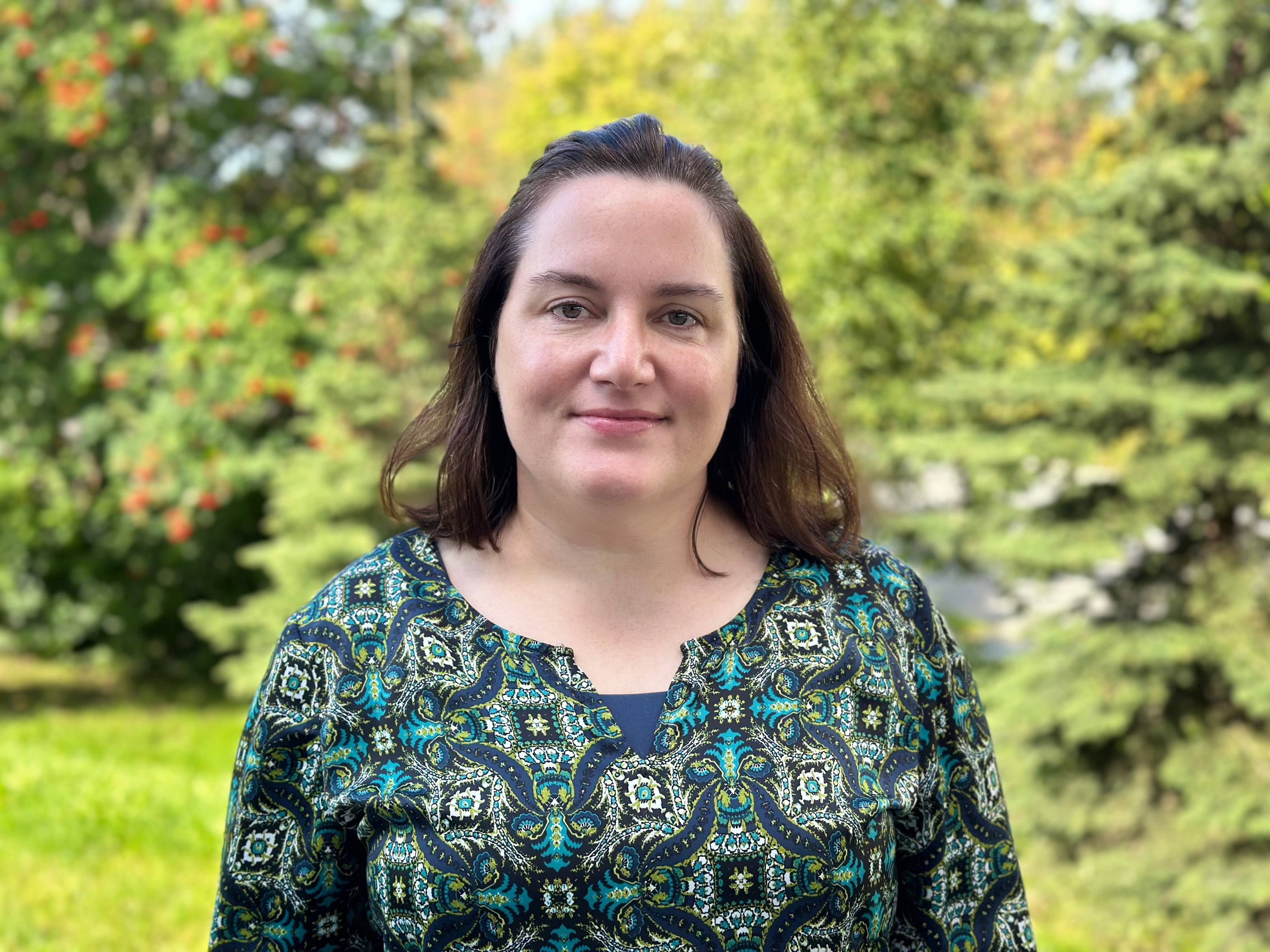Employee spotlight: Sara Hannon named to 2026 ASCEND cohort
November 7, 2025
Sara Hannon, director of the Interprofessional Health Sciences Simulation Center at the University of Alaska Anchorage, has been selected to join the 2026 Advancing Simulation Careers and Empowering Next-Generation Development (ASCEND) cohort.
Sponsored by the Society for Simulation in Healthcare, ASCEND provides mentorship and leadership training to early-career healthcare simulationists demonstrating strong potential in the field. The yearlong program is designed to build the next generation of leaders advancing healthcare simulation as a discipline.
At UAA, Hannon oversees the Interprofessional Health Sciences Simulation Center, which supports students, faculty, and community partners by providing hands-on, interactive learning environments for practicing and teaching healthcare skills.
Below, she shares more about her work, passion for student success, and what this new opportunity means to her.

Name: Sara Hannon
Title: Director
Unit: Interprofessional Health Sciences Simulation Center
Hometown: North Pole, Alaska
Years at UAA: One year and one month
Tell us about your job at UAA.
With our incredible simulation staff and UAA faculty, I provide oversight and lead
the development, implementation, and evaluation of healthcare simulation at the UAA
College of Health. This role is unique due to all of the different programs that we
have the opportunity to support. This provides us with a broad perspective about programs
across UAA and those that we support in our community. I see many opportunities for
interprofessional education and continued growth for students, faculty, and staff.
What do you love most about your work?
I most appreciate the way that simulation provides students with an opportunity to
practice a realistic patient encounter in a safe environment. We can structure the
simulation so that students know what to expect, have an opportunity to apply what
they have learned, and then participate in a debriefing discussion with their faculty
member and peers. This prepares students for clinical experiences and their healthcare
roles. What I most appreciate is hearing from students that simulations prepared them
for interactions with patients and family members. When a student asks me, “When can
we have more sims?” it makes my day!
How do you contribute to student success?
We assist faculty with facilitating simulation-based learning experiences using the
Healthcare Simulation Standards of Best Practice. Not only do we help to facilitate
in-person experiences, but we also coordinate simulations that are offered online
via Zoom or asynchronously. This provides opportunities for students who cannot come
to campus to hone their communication and clinical judgment skills with simulated
participants who may portray patients, family members, and others in the healthcare
environment.
What is the most common question you receive at work?
Besides students asking me, “When can we have more sims?” I am also commonly asked
about how to develop a simulation that aligns with a course curriculum or how to schedule
a simulation. Students are also interested in knowing how the manikins function and
ask frequent questions about the technology. Please email me or a member of our team
anytime, and we can assist.
What was your professional journey that led you to UAA?
Before starting in my role at UAA, I had been a Simulation Lab Program Manager at
Providence Alaska Medical Center. I gained experience with facilitating simulations
for clinical staff, where we used simulations both for clinical training and to test
out new procedures, practices, and even safe medication dosing apps in an in situ
environment. After my experience as an adjunct instructor and an opportunity to facilitate
simulations for nursing students, I became more interested in being part of a simulation
program in an academic environment. This type of learning can help to solidify clinical
competencies and better prepare students for their future professional roles.
What advice would you give to youth interested in your field?
While the number of people employed in healthcare simulation in Alaska is small, this
type of experience opens doors. Seeing students grasp concepts is extremely rewarding.
Roles in simulation are never mundane; we are always finding creative approaches to
problems, learning about new technology, ensuring that course material is updated,
and meeting the needs of our students and faculty.
Anything else you’d like to share?
I was accepted into the Society for Simulation in Healthcare’s Advancing Simulation
Careers and Empowering Next-Generation Development (ASCEND) program, which is a healthcare
simulation leadership program designed to recognize and mentor global healthcare simulationists.
I look forward to continuing to improve our simulation-based learning experiences
at UAA and in the community alongside our wonderful simulation staff, faculty, and
students. As a person who grew up in Alaska, I am always interested in expanding my
horizons and seeking multiple perspectives. This will provide me with the opportunity
to share what I have learned with my UAA community and improve opportunities for students.
By the way, I am a proud UAA graduate (BSN, 2009) and a current MSN-NLDR-ED student.
